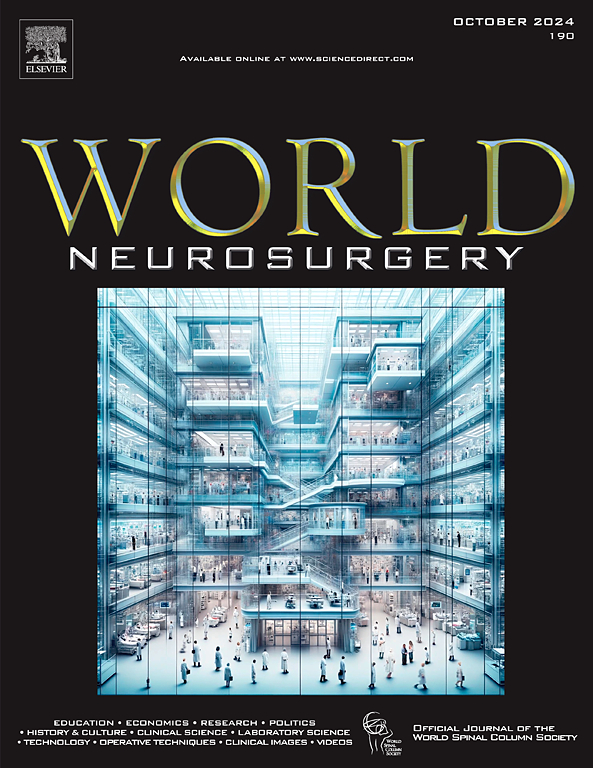Exoscopic Clipping of a Superior Cerebellar Artery Aneurysm via a One-Piece Orbitozygomatic Approach: Educational Operative Video
IF 1.9
4区 医学
Q3 CLINICAL NEUROLOGY
引用次数: 0
Abstract
Superior cerebellar artery (SCA) aneurysms are rare. They represent 1%–2% of all intracranial aneurysms and are usually treated endovascularly.1 However, when the aneurysm configuration is not optimal for endovascular treatment, microsurgical clipping remains a valid alternative treatment option.2,3 We present the case of a 66-year-old male patient, with an incidental 7-mm wide-neck SCA aneurysm, with the parent vessel coming directly out of the aneurysm neck (Video 1). The different possible endovascular treatment options were reviewed and deemed not optimal for this specific aneurysm, potentially resulting either in incomplete aneurysm occlusion or vessel occlusion. Microsurgical clipping was considered the most suitable treatment option for this specific aneurysm. Surgery was facilitated by the high-riding localization of the aneurysm, waiving the need for a posterior clinoidectomy to obtain proximal control at the basilar artery. An orbitozygomatic approach was chosen to obtain an optimal caudocranial working angle and reduce the need for brain retraction. This video highlights the thought process in choosing the optimal treatment for this rare type of cerebral aneurysm, and the important surgical steps to safely approach and clip an SCA aneurysm.
求助全文
约1分钟内获得全文
求助全文
来源期刊

World neurosurgery
CLINICAL NEUROLOGY-SURGERY
CiteScore
3.90
自引率
15.00%
发文量
1765
审稿时长
47 days
期刊介绍:
World Neurosurgery has an open access mirror journal World Neurosurgery: X, sharing the same aims and scope, editorial team, submission system and rigorous peer review.
The journal''s mission is to:
-To provide a first-class international forum and a 2-way conduit for dialogue that is relevant to neurosurgeons and providers who care for neurosurgery patients. The categories of the exchanged information include clinical and basic science, as well as global information that provide social, political, educational, economic, cultural or societal insights and knowledge that are of significance and relevance to worldwide neurosurgery patient care.
-To act as a primary intellectual catalyst for the stimulation of creativity, the creation of new knowledge, and the enhancement of quality neurosurgical care worldwide.
-To provide a forum for communication that enriches the lives of all neurosurgeons and their colleagues; and, in so doing, enriches the lives of their patients.
Topics to be addressed in World Neurosurgery include: EDUCATION, ECONOMICS, RESEARCH, POLITICS, HISTORY, CULTURE, CLINICAL SCIENCE, LABORATORY SCIENCE, TECHNOLOGY, OPERATIVE TECHNIQUES, CLINICAL IMAGES, VIDEOS
 求助内容:
求助内容: 应助结果提醒方式:
应助结果提醒方式:


